A Summary of Autonomous Vehicle Companies
Mar 1, 2023 posted by Franklin Ren
Disclaimer: This article is assisted by ChatGPT
Although a field currently under tremendous doubt and skepticism, the autonomous vehicle industry still attracts many top machine learning researchers and engineers. Not only because it is considered to be the AI application with the largest potential market size (several trillion), but also because its challenging nature and unique way of allowing AI system to interact with the world. This blog gives a brief introduction to the autonomous vehicle industry and provides a list of the top players in the autonomous industry, including their founding history, current status, strengths, and weaknesses.
The autonomous vehicle industry focuses on the development and deployment of self-driving cars and other transportation systems that operate with minimal or no human intervention. The Society of Automotive Engineers (SAE) has defined six levels of driving automation. These levels provide a standardized way to describe the extent of a vehicle's autonomy and the role of the human driver. Level 0: the human drivers are fully in control of the vehicle at all times; Level 1: the vehicles have a single automated system that assists the driver in either steering or accelerating/braking (e.g., adaptive cruise control (ACC), lane-keeping, etc.) and the human drivers must be attentive at all times; Level 2: the vehicles can control both steering and acceleration/braking simultaneously under specific conditions, such as highway driving, but the human drivers are still responsible for monitoring the environment and must be ready to take control at any time. Level 3: the vehicles handle most driving tasks under certain conditions, the human drivers need to be present and ready to intervene, when necessary, but they are not required to pay constant attention to the driving environment. Level 4: the vehicles are capable to perform all driving tasks in specific driving scenarios without humans in the driver's seats. However, human drivers may still be required for driving outside of these predefined conditions. Level 5: Full self-driving cars in all conditions without driver's seats.

The current self-driving car technology stack could be broken out into four layers: perception, prediction, planning, and control. The perception layer involves the process of gathering data from various sensors, such as cameras, Lidar, Radar, and ultrasonic sensors, and fusing the information (often with deep learning algorithms like CNN variants) to create a comprehensive understanding of the vehicle's surroundings. The prediction layer uses machine learning algorithms (e.g., RNN variants) and historical data to predict the likely trajectories and actions of other road users, helping in making informed decisions for the planning layer. The planning layer determines the optimal route and trajectory for the vehicle using the information from the perception layer and the prediction layer. Most current planning algorithms are search-based (e.g., RRT, D*), but learning-based planning such as RL is also under exploration. The control layer is responsible for executing the planned actions by controlling the vehicle's actuators, such as the throttle, brakes, and steering. Currently, traditional control algorithms like PID, LQR, and MPC are still predominantly used over learning algorithms due to their robustness and interpretability. It is also notable that there might be other layers such as localization and mapping, although sometimes considered to be part of the four layers above.
Recently, the progress of the self-driving car industry has been remarkable, as advancements in machine learning and sensor systems have accelerated the development of autonomous vehicles. A bunch of top players emerged in the past few years and have achieved significant progress. Those top players could be further divided into 5 categories: Subsidiaries of Big Tech, Subsidiaries of Automakers, Automakers Themselves, Automotive Technology Suppliers, and Independent Companies. Due to the different funding and operation nature of those 5 categories, the companies show more similarities within their categories but are usually significantly different from those in the other categories.
Category 1: Subsidiaries of Big Tech
Those companies are often backed by big tech companies such as Apple, Google, and Amazon. They are either lab projects which are later separated from their parent companies for independent operation, or bought companies by their parent companies. A key trait of those companies is that their funding is almost purely dependent on their parent companies, although sometimes external funds are available to accelerate their R&D process. Most of them are able to operate independently, although sometimes they might face shareholder pressure from their parent companies due to the loss they are making.

Waymo (Subsidiary of Alphabet): Being one of the earliest players of autonomous vehicles, Waymo is considered to be owning the most cutting-edge tech stack in the autonomous driving industry. Waymo originates from a project of Alphabet's innovation lab Google X run by co-founder Sergey Brin. Its original leader was Sebastian Thrun, a professor from Stanford University and two-time winner of the DARPA Grand Challenge. He was partnered with two other DARPA stars, Chris Urmson from CMU and Anthony Levandowski from UCB during the early development of the tech stack. In December 2016, the project was renamed Waymo and became an independent for-profit subsidiary of Alphabet. After that, Waymo received a total fund of 5.5B where more than half of them are private equity funds from outside investors. At its peak in 2019, Waymo had a valuation of 200 billion, the highest ever for an AI company. Even now, it still has a valuation of 30 billion, comparable with the top-star company OpenAI.
Waymo focuses on L4 autonomous vehicles. Its main business model is in-city short-term ride-hailing (Robotaxi). It does not produce its own cars, instead establishing collaborations with several car manufacturers to incorporate its technology, such as Mercedes-Benz Group AG, Nissan-Renault, Stellantis, Jaguar Land Rover, Volvo, and Geely. In other words, Waymo operates more like “Uber without a driver”. In 2018, Waymo becomes the first company to receive a driverless test permit on the road from California DMV, a reflection of its technological advancement. It also has a very good record of safety, in 2020, it has only 21 human interventions after running for 628839 miles. Now, Waymo's fully driverless cars are already providing services on a paid basis in Phoenix, Arizona. It is also expanding its business to other cities including San Francisco and Los Angeles where the driving condition is more complicated.
Waymo is a believer in Lidar. In its perception stack, Lidar plays a more significant role than cameras and other sensors. It is also developing its own Lidars and chips, which bring superior detection accuracy and latency within the industry, however imposing a cost burden. Also, Waymo's dependence on HD maps might also affect the scalability of its business. Nevertheless, it still has the most advanced and holistic technology stack within the industry and the best safety record among the companies with comparable testing distances. Hence, many believe Waymo is the most promising company to achieve full L4 self-driving.

Zoox (Subsidiary of Amazon): Zoox was founded in 2014 by Tim Kentley-Klay and Jesse Levinson, the first one is an art designer and entrepreneur while the latter one is a former student of Sabastian Thurn at Stanford University. It raised a total funding of 1 billion and reached a peak valuation of 4.3 billion before selling to Amazon for 1.2 billion. Now it is part of the Amazon Devices & Services organization, along with other Amazon units like Amazon Alexa and the newly acquired company iRobot.
Similar to Waymo, Zoox also focuses on L4 ride-hailing business. However, apart from partnerships with existing car manufacturers, it also produces its own cars. A Zoox car follows a symmetrical, bi-directional design with no traditional front or rear end, steering wheel, or driver's seat. In July 2022, Zoox achieved a milestone by producing the first fully autonomous, all-electric passenger vehicle, certified by Federal Motor Vehicle Safety Standards (FMVSS). The Zoox cars integrate Lidar, Radar, and cameras, to achieve robust perception. Although a leader in the robotic design and engineering for fully self-driving cars, Zoox is way behind Waymo and Cruise in its progress in road testing, which is a significant weakness. However, if Amazon keeps investing money in Zoox, it has a foreseeable long-term development scope.
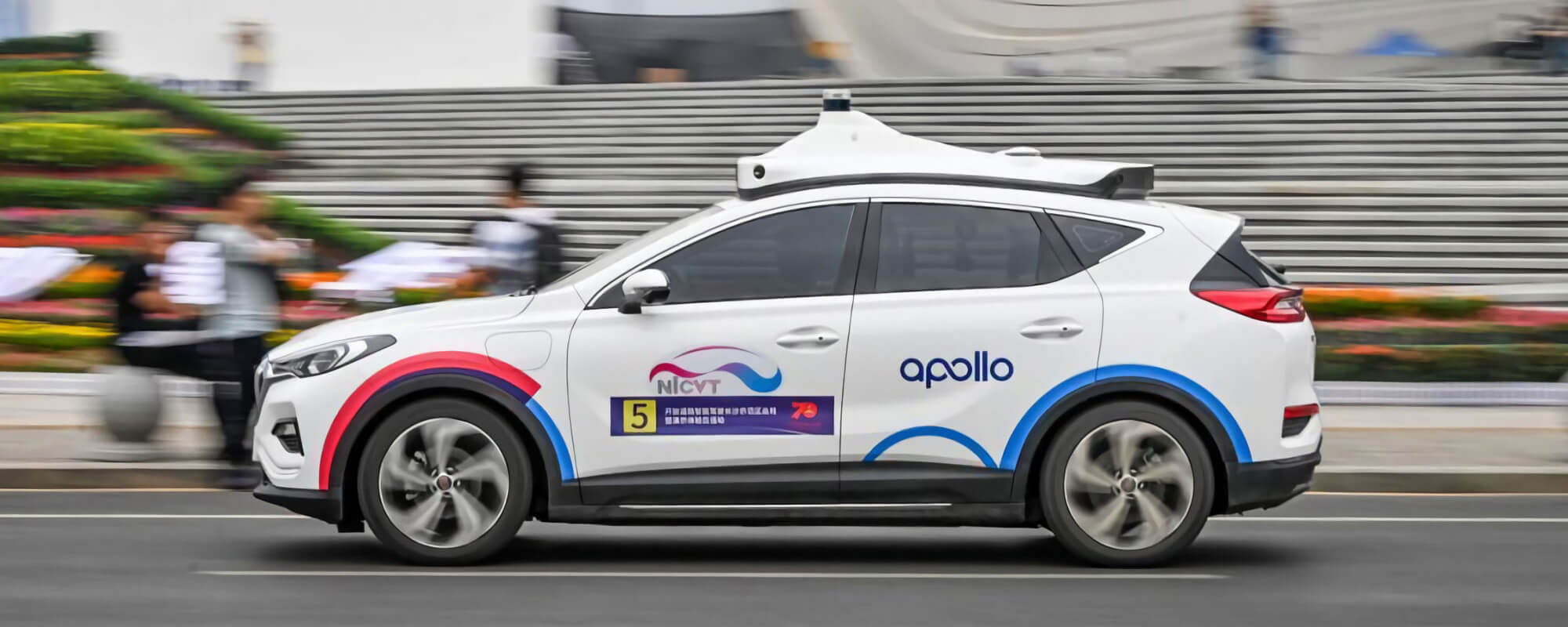
Baidu Apollo: Launched in 2013, Baidu's Self-driving car project is the leading self-driving car company in China. After Qi Lu joined Baidu and came up with the “All in AI” strategy, it has become one of Baidu's most crucial future bets and received a significant amount of investment from Baidu. Baidu focuses on both L4 driverless taxis and driverless buses, partnering with BAIC Motor, GAC Group, Weltmeister, and King Long Bus. It is notable that Baidu's driverless bus (Apolong) also has a specific driverless design like the Zoox car, which could be a potential comparative advantage of Baidu. Additionally, it has an open-source L4 developer platform. In 2022, Baidu launched its paid self-driving taxi service in Beijing, without a driver in the seat.
Baidu's biggest challenge is that its operating domain focuses on China, where the driving condition is more complicated due to overwhelming pedestrians, motorcycles, and electric bicycles, making it challenging for Baidu to expand its operation domains. However, the good thing about a complicated testing environment is that it could obtain more out-of-domain data, which could be a valuable asset for a self-driving car company.

Huawei Car BU: Apart from Baidu, Huawei is another big tech in China that devoted a lot of resources to self-driving car development. Different from Baidu, Huawei's main focus is on L2 partnerships with existing car manufacturers, such as ARCFOX and Seres, although it also has some L4 tech stacks. Huawei shows no interest in the development of pure self-driving taxis, it defines itself as a service provider for car manufacturing companies, which makes Huawei bear fewer security-related burdens, and brings more flexibility.
The biggest challenge of Huawei's self-driving development is that it still struggles in getting partnerships with top car manufacturers, both ARCFOX and Seres have a limited number of customers, restricting the scope of the revenue of Huawei Car BU. Certain board members of Huawei like Chengdong Yu proposed to overcome this challenge by producing its own cars, but there are still huge objections from Huawei's founders as it could be a cash burn.

Uber ATG (sold to Aurora): Launched in 2015, Uber ATG was a top player in the self-driving car industry. Most founding members of Uber ATG are from the National Robotics Engineering Center of CMU, led by Drew Bagnell, and some former Waymo employees, led by Anthony Levandowski. Both groups of people had rich experiences in DARPA Grand Challenges. Uber ATG raised a total fund of 1 billion. The business model of Uber ATG was to provide services for Uber's own ride-hailing services. Leveraging Uber's rich driving scene data (perhaps the second largest, behind Tesla), Uber aimed for L4 at the beginning.
However, Uber ATG was struggling with legal and safety problems. In 2017, Google sued Uber for stealing its technology through hiring Anthony Levandowski. In 2018, a Uber testing car killed a pedestrian and raised tremendous concerns about self-driving car safety. Troubled by recurring legal problems, Uber announced that it will cut ATG and sell it to Aurora in 2020.

Apple: There is no doubt that Apple also has its own self-driving car project. However, since Apple is relatively conservative in disclosing its information, we have very limited knowledge about what Apple's self-driving car project is like. People suspect that it will produce its own electric car, like Tesla, with self-driving components on it. Sources review that its testing fleet of self-driving cars covered more than 13,000 miles over the course of 2021.
Subsidiaries of big tech form the main group of top players in self-driving cars. The cutting-edge technologies of those big techs, especially in machine learning, give them a barrier of entry against other types of companies. Most of those companies focus on L4 Robotaxi, which is an asset-light business - a good fit for tech companies. The main burden of their business models is that they have to spend a significant amount of money and resources to collect enough driving data to handle the long-tail problem. Also, the safety requirement of L4 Robotaxi is also very steep, making it hard to commercialize. The progress of those companies is most likely dependent on their parent companies' dedication to the market of self-driving. If their parent companies wish to support them, it is hard to imagine that there will be a funding problem, otherwise, like Uber ATG, they will face severe trouble.
Category 2: Subsidiaries of Automakers
Companies within this group are either initial investments of car companies or acquired by them. Compared with companies within the previous group, those companies usually have strong ties to the car companies, or what we call OEMs in the self-driving industry. That means those companies' self-driving technology stack might be obliged to integrate with the brand of cars of their parent companies. A good thing about this is that they might not need a tremendous amount of money to build their testing fleet (those fleets could be subsidized by their parent companies) - a major cost burden being removed. They might need, on the other hand, to share some of their tech stacks (usually L2) with their parent companies for profit.

Cruise (Subsidiary of General Motors): Founded in 2013 by another DARPA star from MIT, Kyle Vogt, and an experienced entrepreneur, Dan Kan, Cruise is considered to be the second-most promising self-driving car company, behind Waymo. Y Combinator is one of its earlier investors. In March 2016, it was acquired by General Motors with estimates ranging from over 500 million to 1 billion and quickly became the foundation of GM's endeavors in autonomous driving for the next-generation cars. Cruise has perhaps one of the best balance sheets among all self-driving companies, with a 15.1 billion total funding amount and about 10 billion in its current cash reserves. That allows Cruise to build a large testing fleet for its autonomy tech stack and provide one of the highest average packages for its software engineers in the bay area. Cruise has a valuation of 30 billion.
Cruise also focuses on L4/L5 Robotaxi, although there are some rumors about it sharing technologies with GM's own L2 platform, Super Cruise. Considered to be the most radical self-driving car company in L4 Robotaxi service expansion, GM already has about 100 paid driverless taxis opening services in San Francisco, even during night time. Also, it is the first company that proposed to begin road tests using cars without steering wheels (pure L5 cars).
Cruise integrates Lidar, Radar, and cameras in their cars, a standard tech suit for L4/5 Robotaxi. Although its HD map progress is a bit behind Waymo, it is planning to expand its focus on HD maps to improve efficiency and safety. Its radical service expansion could bring more out-of-domain data, which is crucial for self-driving cars, but also generate a bunch of safety concerns. Many critics are surrounding Cruise for bringing a yet-to-be-ready technology to the road and increasing public safety concerns. However, if the safety concerns are well addressed, Cruise could be one of the most promising companies to be the first to achieve L5 self-driving.

Argo AI (Jointly controlled by Ford and Volkswagen, now shut down): Argo AI was founded in 2016 by Bryan Salesky and Peter Rander, both had rich experience in CMU robotic lab. Although officially an independent company, Argo was considered to be jointly owned by Ford and Volkswagen, which both have a 42 percent share of the company. It had a total funding amount of 3.6 billion before shutting down.
Argo AI also focused on L4 Robotaxi, although its operating domain focused more on Pittsburg, where it was located, instead of the bay area. It created an open dataset called Argoverse, which is considered to be one of the most frequently used open-source self-driving car research datasets. Argoverse consists of multi-sensor datasets, trajectory planning datasets, and HD map datasets, allowing researchers to develop new algorithms for perception, prediction, and mapping.
After incurring a significant loss, Ford and Volkswagen decided to shut down Argo AI in October 2022 and integrate its employees into their own businesses. Fort plans to transfer Argo's tech stack into its L2/L3 projects, which are considered to be more profitable, while Volkswagen continues developing L4 for its own cars, but withdraws from the Robotaxi business. The difference between the fate of Cruise and Argo AI suggests that the business of subsidiaries of automakers is highly dependent on the high-level decisions made by their parent companies. While GM is generous in investing in L4, Ford clearly thinks L2/L3 is a more viable business model.

Woven Planet (Subsidiary of Toyota): Woven Planet was founded by James Kuffner, a robotic scientist and co-inventor of the RRT algorithm, one of the most frequently used robotic planning algorithms. Before joining Toyota, he was an engineering director at Google and worked on robotics projects with Boston Dynamics. In March 2018, Toyota announced a 2.8 billion investment to found a new company, Toyota Research Institute - Advanced Development, with James Kuffner being CEO. Later, it was renamed Woven Planet. In April 2021, Woven Planet Holdings agreed to acquire Lyft's L5 self-driving vehicle division.
Woven Planet's main business model is providing L2 services (e.g., Toyota Teammate) for Toyota cars. Also, it is developing a more diverse set of car software such as car operating systems and HD maps. It also has a team called Woven City, which focuses on smart city development in favor of self-driving cars, robot delivery, clean energy, etc. Since Woven Planet is transformed from a research team in Toyota, its salary is not as competitive as other bay area companies, hence relatively hard to recruit top talents in self-driving cars. However, its business model is less radical and likely to turn into profit faster than L4 Robotaxi.
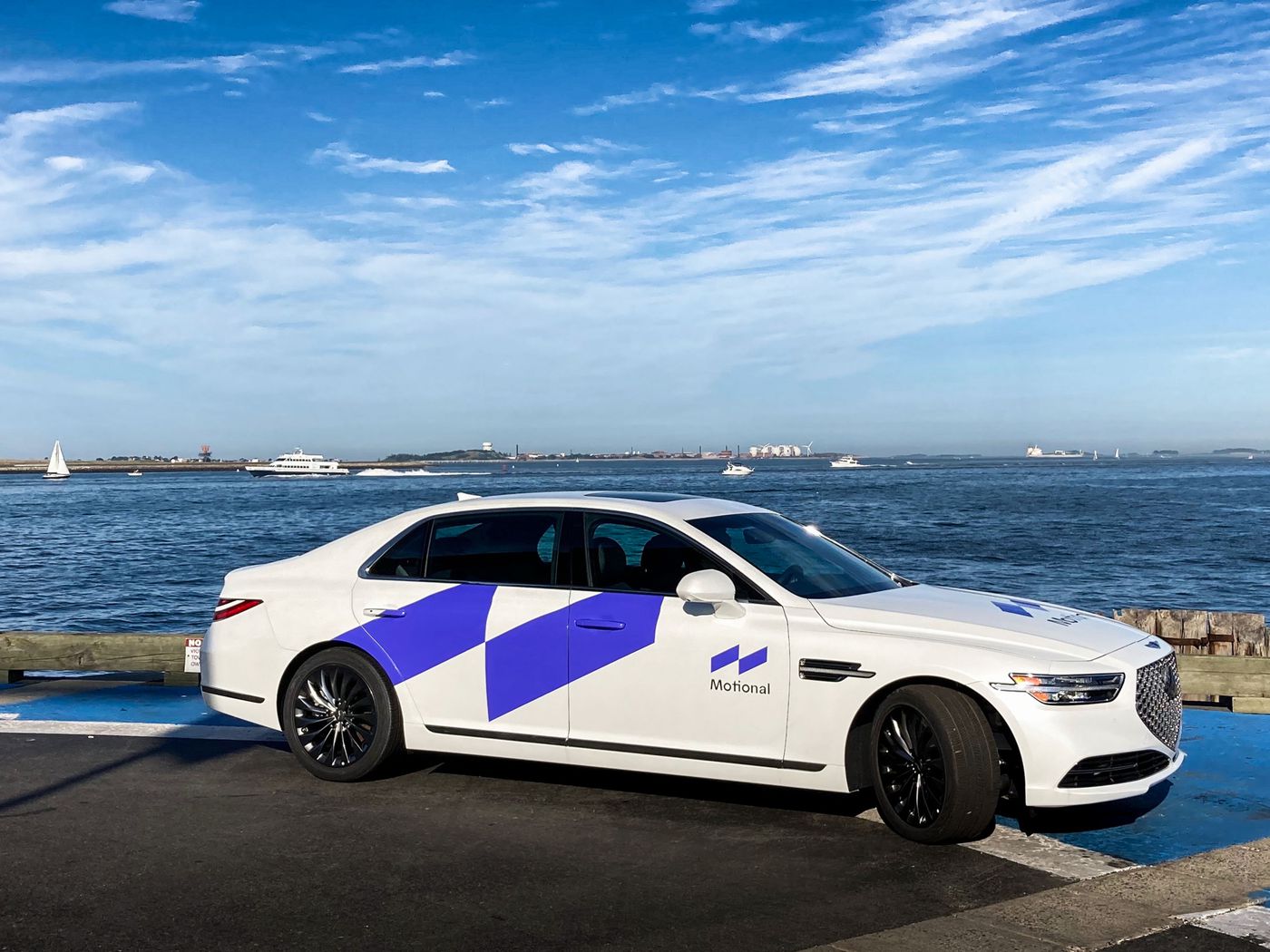
Motional (Controlled by Hyundai): Founded in 2020, Motional is still considered to be a young company. Motional's investor and major shareholder is Hyundai Motor (50 percent), and most of its initial employees are from Aptiv, which holds another half of the shares. Motional has total funding of 2 billion USD and focuses on L4 Robotaxi.
Although still at an early stage, Motional has released so far the most comprehensive open source dataset, Nuscenes. It quickly becomes a boon for researchers in the self-driving car direction in academia. Nuscenes consists of data for all perception, prediction, and planning layers.
Unlike subsidiaries of major tech companies, automaker subsidiaries typically have an easier time constructing their testing fleets for data collection. However, car manufacturers often face greater profit pressures compared to big tech firms, which can achieve asymmetric profits, and tend to exhibit less patience for long-term technology development. As a result, many car companies show increasing interest in Level 2 autonomous systems, a profitable approach demonstrated by Tesla. It is likely that the future will see a blend of Level 4/5 and Level 2/3 development pursued by automaker subsidiaries.
Category 3: Automakers Themselves
Different from some automakers which tend to put their self-driving R&D into an independent subsidiary, some automakers conduct their self-driving R&D within themselves. A good example is Tesla Motors, where the Autopilot team (later FSD team) is an essential part of the company.
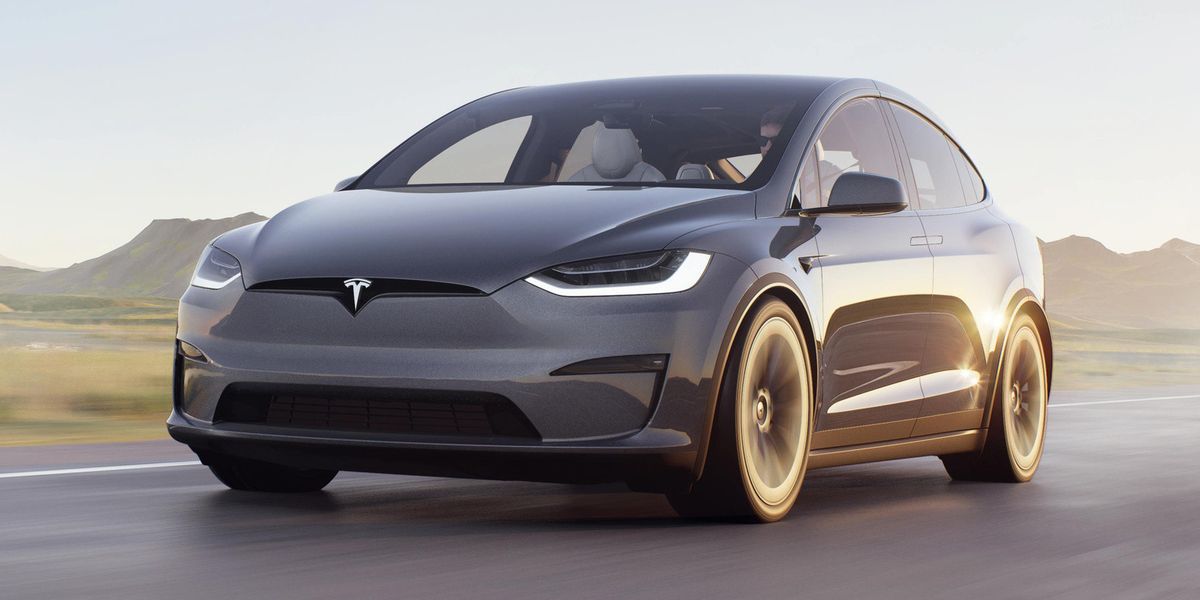
Tesla: In October 2014, Tesla released Autopilot on its ground-breaking electrical car, Model S, and quickly gathered the attention of many users. Its initial leader was Sterling Anderson, designer of Model X. Two years later, Elon Musk changed its name to Full-Self-Driving (FSD) we all know today, and began selling it as software to Tesla users. After Sterling left his position, Elon Musk subsequently hired Jim Keller for hardware development and Chris Lattner for software development. He also hired Andrej Karpathy, a computer vision scientist and a student of Professor Fei-Fei Li, to develop novel computer vision algorithms for Tesla FSD. Today, Tesla FSD is running on 400000 electrical cars in North America alone, more than all other self-driving companies combined.
Different from Google, Tesla is not a believer in Lidar. Although the first version of Autopilot has a single Lidar, it was later removed in favor of a pure vision-based algorithm which Elon Musk favors. Tesla's confidence in pure vision-based algorithms is based on the tremendous amount of testing data its users gather every day. Since deep learning is somehow data-driven, Musk believes it will be able to handle all possible out-of-domain cases required for self-driving as long as there is enough data - an idea which many computer vision scientists disagree with.
Tesla FSD is still at L2 stage. When it is trying to move from L2 to L3/L4 stages, its pure vision-based algorithm is bringing significant safety concerns. Since 2016, the federal agency has investigated 35 crashes in which Tesla's Autopilot or FSD systems were likely in use. Together, these accidents have killed 19 people. Many have urged California DMV to limit the use of Tesla FSD and prevent Tesla from marketing its Self-Driving technologies. However, market-wise, FSD has no doubt achieved great commercial success. The price of FSD rose to 15000 dollars per car in 2021, and Tesla's self-driving unit might have become the first one to turned into profits. However, whether a data-driven pure vision-based algorithm is able to achieve full self-driving stays a debatable matter.
Fun fact: Tesla is the sole top player in self-driving whose founding members do not include anyone from the DARPA challenge.
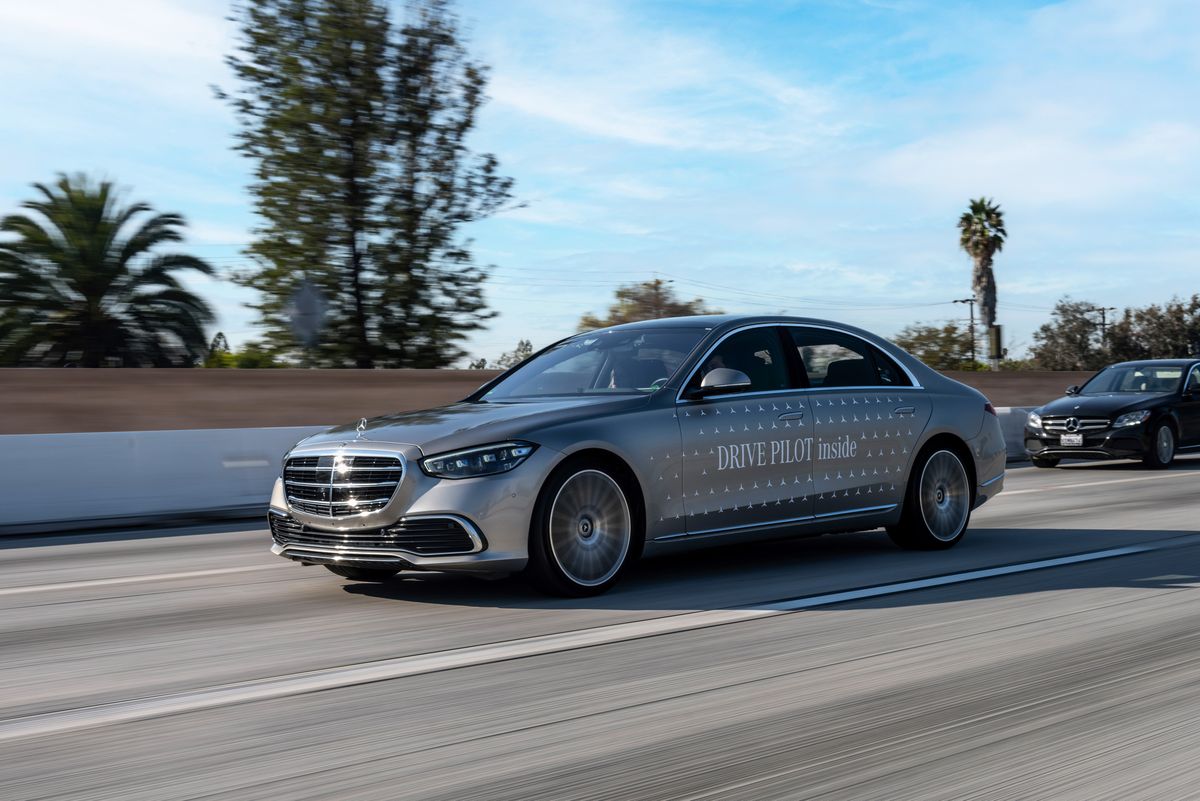
Mercedes-Benz: Among traditional car companies, Mercedes-Benz is the top player in terms of self-driving development. Being the first automaker certified to sell vehicles with SAE L3 autonomous technology, Mercedes-Benz proposed to release its Drive Pilot on EQS and S-Class models. At the same time, Mercedes-Benz claimed to be responsible, both legally and financially, for any accidents that happened when its users are using the Drive Pilot. That shows Mercedes-Benz's confidence in its self-driving technology. However, it is also notable that its L3 still has a relatively strict speed limit (40 mph), which might need years to overcome.
Drive Pilot uses both cameras and Lidars provided by Luminar.

Other car companies: General Motors' Super Cruise offers L2 capabilities on its CT6 cars. It uses a combination of cameras, ultrasonic sensors, and mapping data. GM is also planning to release Ultra Cruise, which enables hands-free driving in more than 95 percent of driving scenarios, with the integration of the Lidar sensor.
Audi developed an L3 system called Traffic Jam Pilot that could specifically handle the traffic jam situation. It has been on A8 for several years and solved the pain of many users who frequently face traffic jams.
Many new electrical car companies, such as Lucid and Rivian in the US, and NIO, Xpeng, and Li Auto in China, all have their own Autopilot teams. Among them, Xpeng's tech stack is considered to be more advanced.
Automakers' self-driving teams typically focus on L2 as a service for their car users. Some charge an extra amount while others include that price in the price of their cars. L2 has been proven to be a viable path for automakers to make a profit, however, there might be some unforeseeable challenges when those companies are trying to move from L2 to L3/L4. Safety is one concern. Besides, the sensors could be expensive and erode the profit margin of their cars. Nevertheless, the sheer amount of data they are able to gather could be a huge comparative advantage over other self-driving companies.
Category 4: Automotive Technology Suppliers
Those companies usually define themselves as component suppliers of automakers. Instead of supplying a complete self-driving system, they usually supply key components like Lidar, Radar, chips, and software.
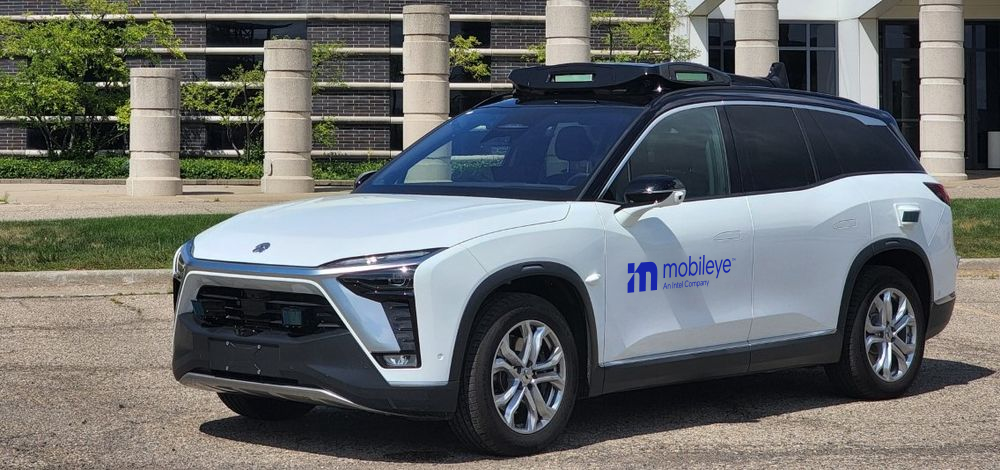
Mobileye: Mobileye, founded in 1999, specializes in developing autonomous driving technologies and advanced driver-assistance systems (ADAS) such as cameras, chips, and software. It was acquired by Intel in 2017 and went public again in 2022. Mobileye has formed numerous partnerships with automakers (e.g., BMW, Nissan, Volkswagen, NIO, Ford, and Geely) and launched various products and services. Some of their advanced technologies that could help automakers to improve their L2 experiences include the EyeQ system-on-chip, REM 3D Map Builder, and Responsibility-Sensitive Safety Model. Mobileye Drive, an L4 self-driving system Mobileye is currently developing, was first fitted to vehicles for driverless ride-hailing services in 2021, with public testing planned in Germany and Israel in 2022.

NVIDIA: NVIDIA is a leading provider of artificial intelligence (AI) technology. NVIDIA's self-driving technologies are based on its DRIVE platform, which includes a variety of hardware and software components. The DRIVE platform's hardware components include the DRIVE AGX Xavier system-on-a-chip (SoC), which is a powerful AI processor that can process large amounts of data from sensors such as cameras, Radar, and Lidar. The DRIVE platform's software components include the DRIVE SDK, which is a development kit that provides tools and libraries for developing self-driving applications. The DRIVE SDK also includes a variety of pre-trained AI models that can be used to perform tasks such as object detection, lane detection, and path planning. NVIDIA's self-driving technologies are being used by a variety of companies, including Waymo, Uber, and Volvo. These companies are using NVIDIA's technologies to develop self-driving cars that can safely navigate city streets and highways.
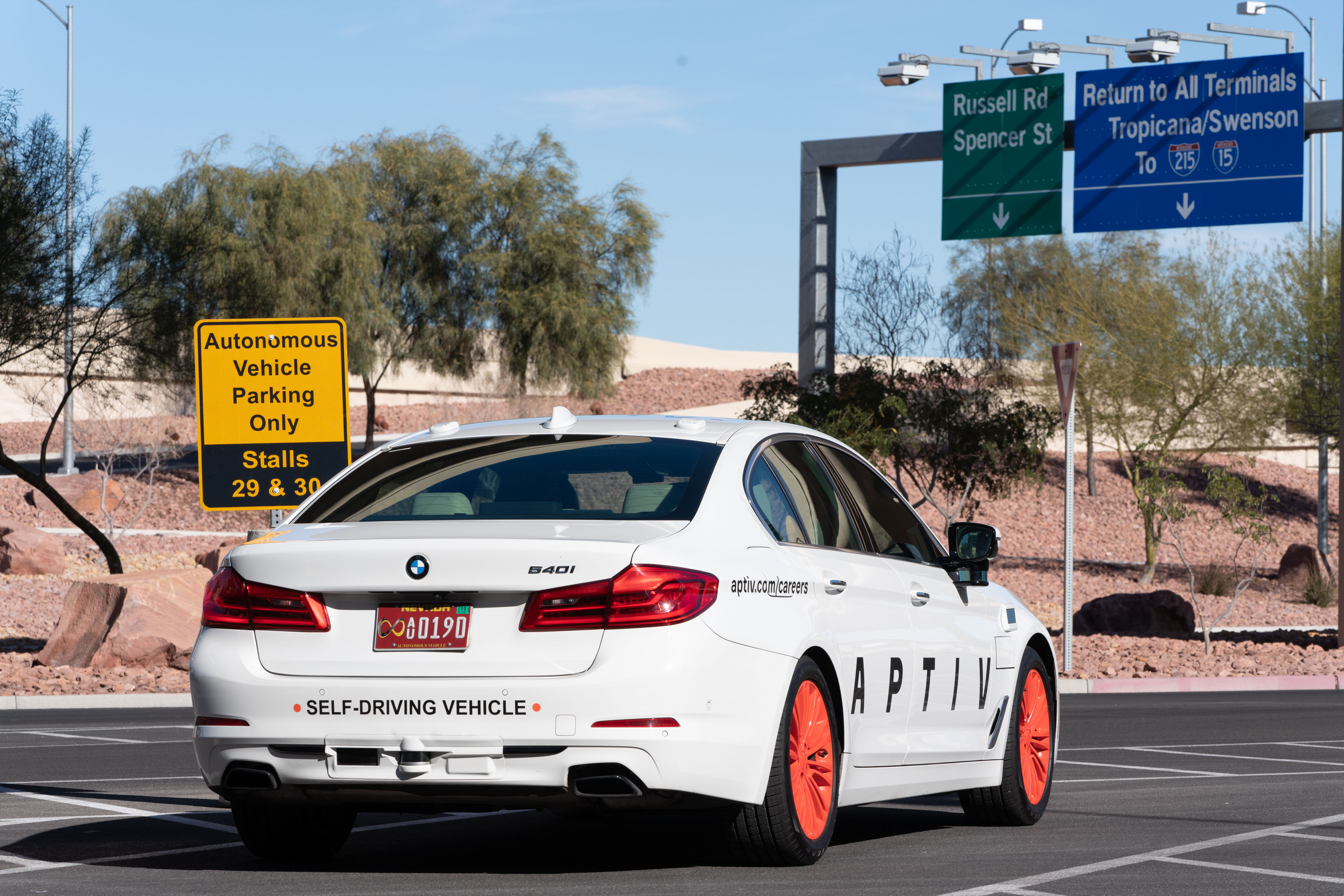
Aptiv: Aptiv is a general automotive technology supplier. It was part of General Motors. In August 2019, Aptiv and Hyundai Motor initiated the autonomous driving joint venture Motional, which focuses on developing and commercializing Level 4 and 5 autonomous technologies. In January 2021, Aptiv also introduced a versatile automated driving platform that can be implemented in various vehicles and upgraded wirelessly by automakers.
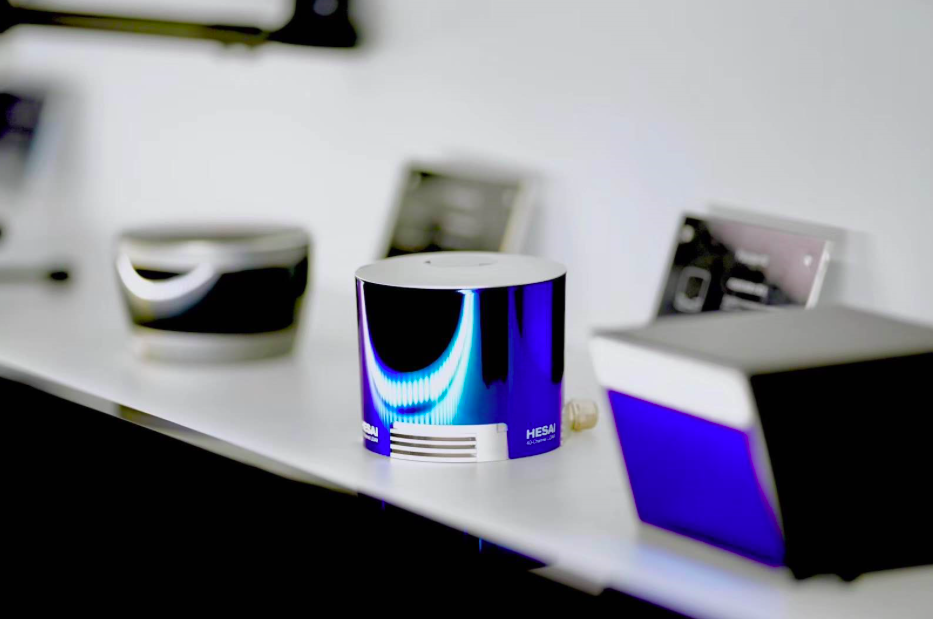
Luminar Technologies and Hesai: Luminar Technologies is a company specializing in vision-based Lidar for self-driving cars. It has partnered with major automotive companies, including Toyota Research Institute, Volvo, and Audi AID. Luminar has developed several lidar sensor systems, such as Hydra, Iris, and Iris+, which offer varying levels of detection range and resolution.
Hesai is another company that focuses on Lidar development. Based in China, it has worldwide partnerships with Nvidia, Li Auto, and several self-driving companies like Baidu and WeRide. Compared to Luminar Technologies, Hesai focus more on L4 Lidar development.
Compared with previous categories, automotive technology suppliers have a wider range of flexibility since they could both partner with automakers to improve on L2/L3 and partner with self-driving car companies to provide essential components for L4/L5. Since they focus on key components only, it will be easier for them to lower the cost and hence gain more profit margin. However, certain partners might be unsatisfied with such key component dependency and choose to develop on themselves. Tesla, for example, chose to abandon Mobileye and develop its own chips.
Category 5: Independent Companies
Some autonomous vehicle companies do not have a parent company from the tech segment or the auto segment, neither are they controlled by any major shareholders. Their independence allows them to have more flexibility in strategy planning. The downside is, they usually have tighter financial conditions. Usually, they need to have faster schedules to go into IPO, in order to raise more funds. Therefore, they tend to focus on business models which have shorter R&D cycles.

Aurora: Founded by Chris Urmson from Waymo, Sterling Anderson from Tesla, and Drew Bagnell from Uber ATG in 2016, Aurora is a joint venture of talents from a group of top autonomous vehicle companies. It has a total funding amount of 2.9 billion, and a pre-IPO valuation of 14 billion. In November 2021, Aurora went public through a SPAC set up by Reid Hoffman and Mark Pincus. Being the second self-driving company that went public. Its peak market cap is about 20 billion.
Aurora focuses on long-range L4 self-driving trucks, which is considered to be an easier case for autonomous vehicles. Since the truck business has a much larger market size than ride-sharing and ride-hailing, Aurora believes it could turn into a profit faster this way. In May 2022, Aurora announced the expansion of its self-driving freight pilot with FedEx. The expansion is to include service from Fort Worth to El Paso, Texas, which takes about 600 miles. As of May, Aurora has completed a total of 60,000 miles with zero safety incidents. It plans to fully commercialize those routes by mid-2024.
Aurora uses Lidar, Radar, cameras, and HD maps for its truck in order to provide a high level of safety measures. This is because trucks are more deadly than usual cars when any accident happens. It also acquired Blackmore, a Bozeman, Montana-based company focusing on Frequency Modulated Continuous Wave (FMCW) lidar which could achieve longer-range detections. Aurora's testing fleet is relatively small; hence it is more dependent on the simulator to provide enough OOD data for model training. The good thing about Aurora is that self-driving truck is a high-demand, profit-viable, and technologically-friendly business compared to Robotaxi. The downside is that since Aurora has a tight financial condition, it is unable to build a large testing fleet, leading to slower technological progress. This might consider dangerous for a public company under significant shareholder pressure.

Nuro: Nuro was founded by Jiajun Zhu and Dave Ferguson (another DARPA alumni). It has a total funding amount of 2.1 billion and a peak valuation of about 10 billion. While Aurora is focusing on long-term cross-city on-highway truck delivery, Nuro focuses on short-term, in-city, slow-speed robot delivery. In December 2021, Nuro announced a partnership to commercially deliver 7-Eleven goods. In September 2022, Uber and Nuro Announced a 10-year partnership for autonomous food deliveries starting in California and Texas.
Nuro develops its own delivery robot. The robot is lightly weighted, integrating cameras, Lidar, and Radar. It aims for solving the last mile problem of grocery delivery and the driver scarcity problem for food delivery. The good thing about this business model is that it has fewer safety concerns since Nuro robots could operate with a more conservative policy and slower speed. The bad thing, however, is that it might be hard for a Nuro Robot to find a place to park while waiting for people to pick up its carry-ons.
Nuro hasn't gone public yet.
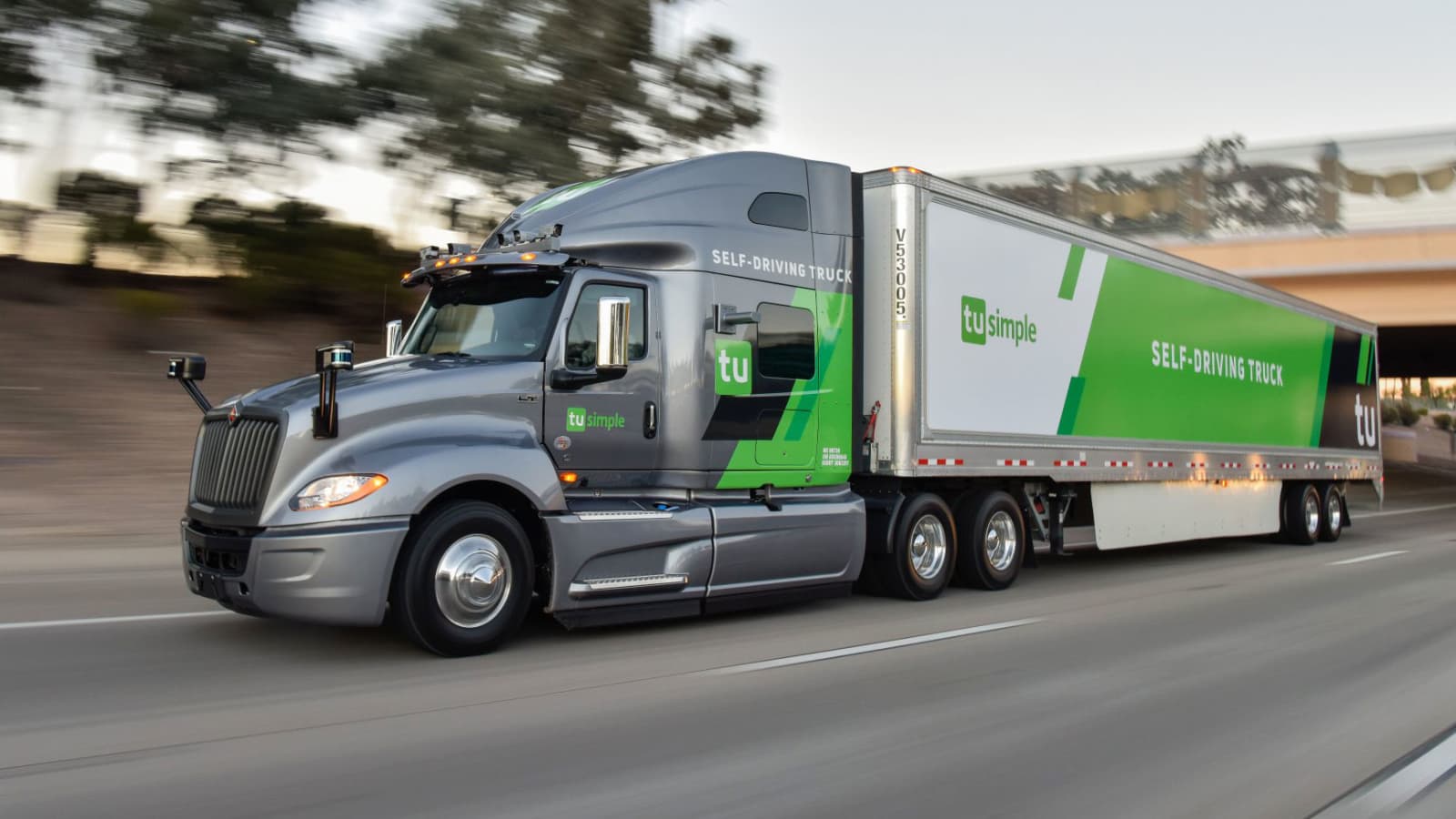
TuSimple: TuSimple is a company founded by Xiaodi Hou and Mo Chen, it has business in both the US and China. It raised a total funding of 648.1 million before going public and becoming the first self-driving stock in NASDAQ. Similar to Aurora, TuSimple also focuses on L4 self-driving trucks.
However, after going public, TuSimple faced many troubles. Although hiring people using a very high bar, people are still questioning whether TuSimple has a sufficient tech stack for self-driving development (since very few of its early employees have a self-driving background). Also, its relationship with China was scrutinized by the US government. Furthermore, a dangerous near accident raised the public concerns about TuSimple's trucks. Facing tremendous shareholder pressure, Xiaodi Hou left the company and suggested that he might seek another start-up venture. Rumor suggests that the remaining shareholders are currently seeking an acquisition.
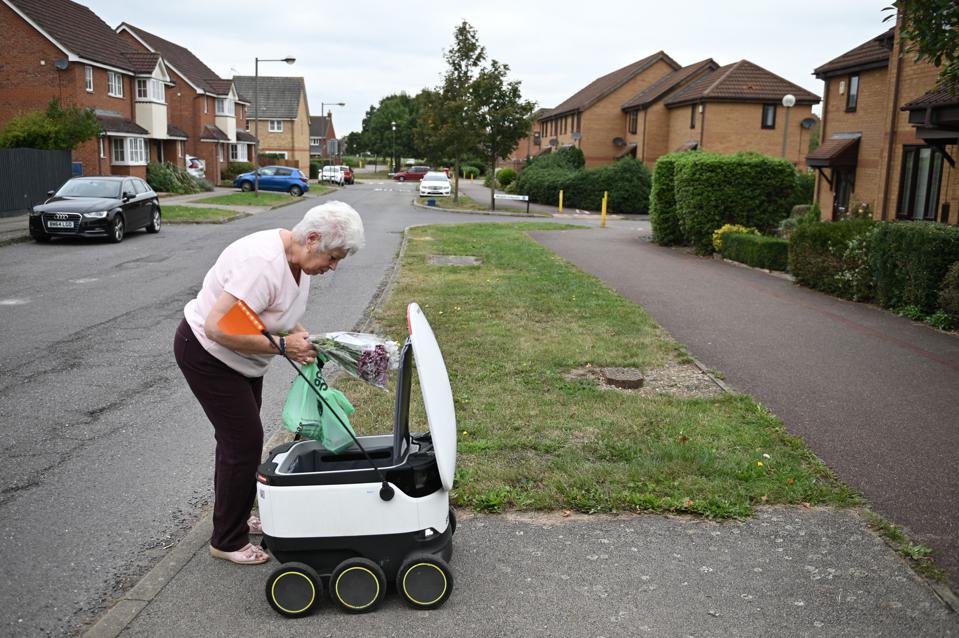
Starship Technologies, Coco, and Kiwibot: Those three companies aim for automatic food delivery. Different from Nuro, all of those three are using smaller robots that could drive on the sidewalks, eliminating the parking problem. However, since their robots are not “smart” enough, their operating domain is still quite limited. They have raised funds from tens of millions to hundreds of millions.
Technically, they are not self-driving companies yet, since they are still dependent on human monitors to control the delivery robots. Further development might still be challenging in order to make the small robots fully automatic.

Pony.ai and WeRide: Both of them are Chinese L4 Robotaxi companies. Most of their founders are from Baidu self-driving projects. Although based in China, they also provide services in California. They have both raised a total funding of more than 1 billion. In 2021, Pony.ai has started driverless taxi services in Guangzhou, China, while in 2022, WeRide launched driverless buses in Guangzhou. Currently, their operating domains are still relatively easier.
Both Pony.ai and WeRide haven't gone public yet. They have relatively cutting-edge technologies. However, they still need to prove that they are capable to expand their business to more complicated driving scenarios in China in order to attract more investments.
As we could see, independent self-driving companies are more reluctant to focus on the Robotaxi business. This is because it might take longer for the public to accept driverless passenger transport than driverless freight transport. Also, the driving scenarios of L4 Robotaxi are also more complicated. Independent companies usually have tighter financial conditions, forcing them to choose business models which could turn into profits faster. The good thing about independent companies is that they have much flexibility in choosing partnerships and general strategies, and their operations are unlikely to be affected by the financial condition of any parent company.
The autonomous vehicle is a revolutionary development that promises to reshape the landscape of transportation. With their potential to enhance road safety, increase efficiency, and provide significant environmental benefits, those self-driving cars stand as a testament to the power of human ingenuity and technological advancement. However, it is crucial to address the associated challenges, such as regulatory concerns, unemployment concerns, and ethical dilemmas, to ensure a smooth transition to this new era of mobility. By fostering collaboration among stakeholders, investing in research and development, and embracing a thoughtful approach to policy, society can fully harness the transformative potential of autonomous vehicles while mitigating potential risks.